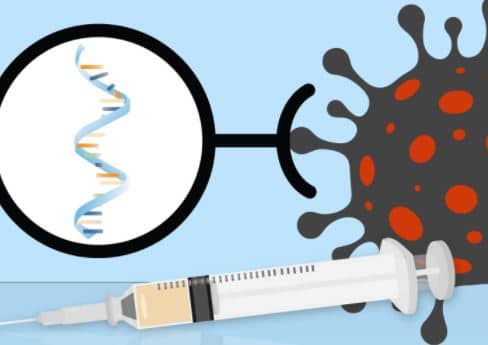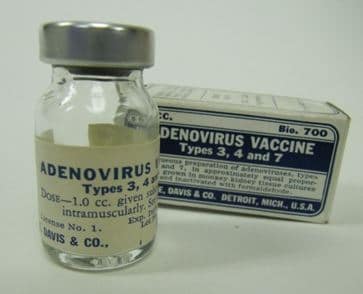The pandemic has put everything at a halt, like a boulder blocking the road, halting the effect of time. Who wouldn’t want to go back to a normal life? A life where you wouldn’t have to wear masks, unfollow social distancing guidelines, hug each other, and eat at a restaurant together where everything seems like before. While you have been waiting patiently, passing the time by binge-watching, and getting used to the mundane work from home schedule, scientists around the world have been trying to grant us our wish so that the world will resume.
They have worked hard, and the process that takes a decade has been brought down to just a year. Even though our scientists have developed a cure, it is apparent that you might have your doubts. There have been many developments, and countries like the US, Germany, UK, Russia, China, and India are at the forefront of combatting the virus with efficacious vaccines. Even though “vaccine” is an umbrella term, there are various types of vaccines, and their primary function is to make our body cells ready to fight a specific foreign body, like the SARS-CoV-2 for the Covid-19 vaccine.
What is the mRNA Vaccine, and how is it effective?

While the traditional way of making a vaccine is to use an inactive germ in our bodies to teach our cells to fight, mRNA has an entirely different way of functioning. It signals our cells to produce proteins, which sets in a reaction chain triggering our immune system. The antibodies produced in this process are what helps to combat the virus in a real scenario. In the case of COVID-19, mRNA instructs our cells to produce a spike protein (found at the surface of SARS-CoV2).
After the Spike proteins’ production, the cells get rid of it and destroy the instructions to make the protein, thus developing a detailed response to spike protein. Now, when the SARS-CoV2 enters your body, a response is generated as the spike protein is considered harmful by your body’s cells, shielding you from the virus. Thus, keeping you safe before the virus causes any damage to your body avoiding critical care. Pfizer, BioNTech, and Fosun Pharma use the concept of mRNA to make the Cominarty vaccine. While in the United States, BARDA and NIAID have developed the Moderna vaccine using the same idea.
- Community – Pfizer, BioNTech, Fosun Pharma
The Cominarty vaccine is 95% effective, according to the primary trial data. The common side effects that you can expect are anaphylaxis (severe allergic reaction), fever, fatigue, headaches, swelling, or redness at the site of injection, and joint pain. These side effects have been seen in 1 out of 10 people who had been administered this vaccine.
- US – Moderna BARDA NIAID
The Moderna vaccine has a similar side-effect like the Comirnaty as observed in 1 out of 10 people. One can expect additional side effects are swollen lymph glands at the dosage administration site, nausea, and vomiting. Moderna shows a 94.1% efficiency, and after the first dosage, the effectiveness is as high as 85%. The side effects are mild and not fatal.
What is the Adenovirus vaccine, and how effective is it?

Adenovirus was discovered after the adenoid tissue in the human body. It comprises of early genes and later genes and a non-enveloped, double-stranded DNA. The early gene replicates the virus, whereas the late gene causes cells’ breakdown (cell lysis). The early gene can be removed from the Adenovirus, and so, what has been left is the late genes capable of cell breakdown.
Therefore, our immune system can attack the late gene and develop an immune response, as the early genes cannot replicate. When seen analogously, it looks like an army of soldiers fighting a couple of enemy soldiers. These are used as vectors that carry antigens developing an immune response. Based on these concepts, Oxford University in the UK invented the AstraZeneca vaccine.
- Oxford – AstraZeneca
The AstraZeneca vaccine developed by Oxford University has a 90% effectiveness and needs to be administered in two dosages. The vaccine is effective in the age group of 18 to 55 years old. You can expect common side effects of swelling and redness at the injection site and pain in the arm. There have been three transverse myelitis incidences (swollen spinal cord), but they claimed to be not due to the vaccine alone.
What is an Inactive vaccine, and how is it effective?

The most common types of vaccines used for polio, chickenpox, and MMR are inactive vaccines. The inactive vaccines contain the weakened virus, which cannot replicate, enabling T-cells’ production (paramedics of our body). A drawback with inactive vaccines is that it works only when the body’s antibodies are at a higher count, which is possible during infancy and when one gets antibodies dosage.
As the deadly virus is introduced into the body, the immune system fights it off, thereby remembering the attack and saving it from getting infected in the future. Based on this concept, China developed the BBIP-CorV and CoronaVac Vaccines, and India developed Covaxin.
- Covaxin
The Indian-based company Bharat Biotech developed the Covaxin and claimed to be 60% effective. The results of Phase I, II, and III trials have not been disclosed as of yet. The company warns people who have pre-existing conditions like the weakened immune system, allergic histories (bronchitis, asthma), blood disorders, and have blood thinner prescriptions should avoid getting a Covaxin dosage. Pregnant ladies are not advised to take the Covaxin shot. Common side effects include nausea, backache, and loss of appetite.
- BBIP-CorV and CoronaVac
The BBIP-CorV has 74.5% efficacy, while CoronaVac has just passed the 50% efficacy rate. Common side effects, as seen in Covaxin, can be expected. Bahrain had been reportedly seen to participate in the trials in the development of BBIP-CorV.
There are other types of vaccines like Peptide vaccines and non-replicating viral vector vaccines. Russia has developed Sputnik-V based on this concept, which has 91.6% efficacy against the deadly coronavirus.
Conclusion
Now that you have been educated about the different types of viruses, trust in science is the foundation for ensuring a normal life before the pandemic. There are measures taken to ensure your safety by the government. The FDA (Food and Drug Administration) had set up meticulous criteria for protecting the candidate involved in the trial and ensuring the virus’s development. Getting vaccinated is not all required; the CDC and FDA have set up a monitoring protocol to help you in case of any adverse side-effects.
For our body to set up an immune response, there should be side effects. This is because the reactiveness that can be seen or felt in our body suggests the virus is working, preparing us to fight the Covid battle. After extensive research and trials, the vaccine has been FDA approved, and so there must be trust not just in the government but also in the hardworking scientists who moved heaven and earth to get a cure. Cheers to getting back to normal soon!



